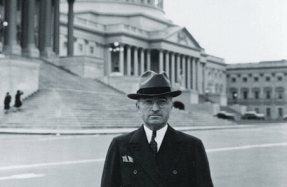AMERICA’S FIRST PASSENGER AIRSHIP


EARLY IN 1912, PIONEER AVIATOR AUGUSTUS ROY KNABENSHUE SHARED AN IDEA WITH FELLOW BIRDMAN CHARLES WILLARD FOR BUILDING AN AIRSHIP THAT COULD CARRY 10 TO 12 PASSENGERS ON REGULAR TRIPS. The two had been friends since at least September 1909, when at a flying exhibition in St. Louis’ Forest Park they came up with the idea of organizing what would become the legendary 1910 Dominguez Air Meet.
Knabenshue first achieved fame when he flew Thomas Baldwin’s California Arrow airship at the 1904 Louisiana Purchase Exposition in St. Louis, where he won the grand prize for his record flights. He had been a professional balloonist since 1900, when he bought his first balloon and started offering flights at county fairs. His socially prominent family opposed the venture, and Knabenshue said, “I could not engage in a business that would lower and drag the family name through the mire,” so during those early flying days he went under the name Professor Don Carlos.



By 1912 Knabenshue had designed and built several successful airships, slowly increasing their size and capacity and establishing many aviation firsts, including the first powered flight in the U.S. with
You’re reading a preview, subscribe to read more.
Start your free 30 days



